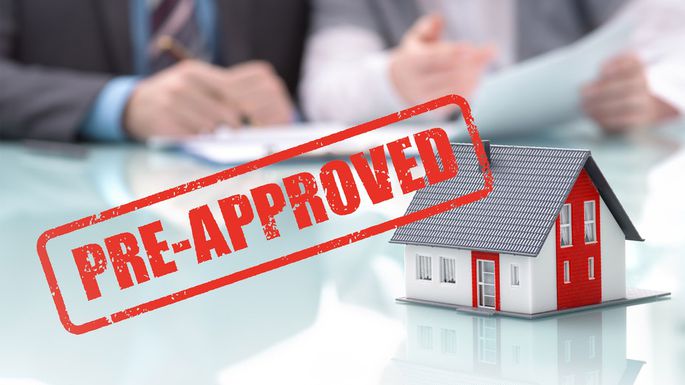
There are a few things to consider before you buy your first home. You need to know your budget, whether you want a condo, townhouse, or single-family home, what neighborhood you want to live in, and your must-have features. But there’s another critical step you need to take before you start looking in seriously – Once you’re ready to start touring houses, you need to get preapproved for a loan.
Thankfully, getting preapproved is a simple process – one that you no longer have to make an in-person appointment to do. You can simply apply online with a bank and, once you provide the necessary information, you can get preapproved in minutes. Here are key tips to keep in mind:
1. Preapproval is Not the Same as Getting Prequalified
When getting prequalified, the lender provides an estimate of how much you can borrow based on the financial information you provide. This process doesn’t involve verification of the information, making it less formal and authoritative than preapproval. Prequalification is useful for getting a general idea of your borrowing capacity but doesn’t carry the same weight as preapproval.
In contrast, preapproval involves a more thorough preliminary assessment of your finances by the lender. This process includes verifying the information you provide, such as income, assets, and credit history. Once preapproved, the lender issues a letter indicating that, pending the submission of necessary documents and the absence of major issues, they are ready to grant you a loan. While preapproval is not a guarantee of a mortgage, it significantly strengthens your position when making an offer on a home, as it shows sellers and agents that you are a serious and qualified buyer.
2. Get Preapproved Right Away
Preapproval not only helps you understand your budget and what you can afford, but it also strengthens your position when making offers. Sellers often view preapproved buyers as more serious and financially capable, which can make your offer more attractive.
3. Home Sellers Expect It
In competitive markets, sellers often require preapproval letters to consider offers. It shows you’re ready and able to purchase, which can be a deciding factor in a competitive bidding situation. It also:
- Demonstrates Seriousness: It shows sellers and agents that you’re a serious buyer with the financial backing to purchase a home.
- Clarifies Budget: It helps you understand what you can afford, narrowing your search to homes within your price range.
- Speeds Up the Process: It can expedite the closing process, as the lender has already reviewed your financial situation.
- Competitive Edge: In multiple-offer situations, a preapproved buyer often has an advantage over those who haven’t secured financing.
4. Check Your Credit
Your credit score and report play a significant role in determining the terms of your mortgage, including the interest rate and the loan amount you may qualify for. Here’s why checking your credit beforehand is crucial:
- Understand Your Credit Standing: Knowing your credit score gives you an idea of where you stand and what kind of loan terms you might expect.
- Identify and Correct Errors: Reviewing your credit report allows you to spot any inaccuracies or discrepancies that could negatively affect your score. Correcting these errors can improve your score and help you qualify for better rates.
- Improve Your Credit: If your score is lower than you’d like, you can take steps to improve it before applying for a mortgage. This might include paying down debt, avoiding new credit inquiries, and making timely payments.
- Better Loan Options: A higher credit score can give you access to more favorable loan options and lower interest rates, potentially saving you thousands of dollars over the life of the loan.
It’s wise to check your credit report from all three major credit bureaus (Equifax, Experian, and TransUnion) at least a few months before you start the home-buying process. This gives you time to address any issues and optimize your credit profile.
5. Gather Necessary Financial Information
Being prepared with the necessary documentation can streamline the preapproval process and make it easier for lenders to assess your financial situation. Here’s a quick recap of what to gather:
Income Verification:
- W-2 forms from the last two years.
- Recent pay stubs (usually from the last 60 days).
- Tax returns from the last two years.
- Documentation of any additional income sources (side jobs, bonuses, etc.).
Asset Verification:
- Bank account statements from the last 60 days.
- Investment account statements from the last 60 days.
Personal Information:
- Driver’s license or another government-issued photo ID.
- Social security number (used to pull your credit report and verify identity).
Additional Documents:
- Documentation for any other financial obligations or debts, such as student loans, car loans, or credit card balances.
Having these documents ready not only helps speed up the preapproval process but also demonstrates to lenders that you’re organized and serious about securing a mortgage. It can also help prevent delays or issues later on in the home-buying process.
6. Understand Preapproval Conditions
Once you have all the information you need, the underwriting system should deliver your preapproval letter in a matter of minutes with one of four conditions: approved, approved with conditions, suspended, or denied. If denied, work on improving your financial situation or credit score. Your lender can provide guidance on meeting any requirements.
7. The Letter Isn’t Valid Forever
Preapproval letters typically last 60 to 90 days, as your financial situation can change. Be mindful of this timeline and consult with your lender if you need an extension or update.

